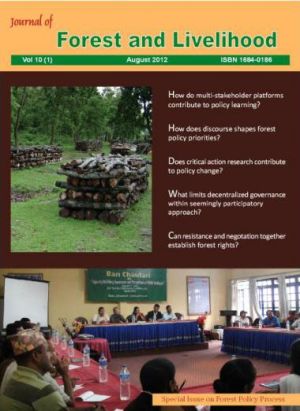Is REDD+ Redefining Forest Governance in Nepal?
DOI:
https://doi.org/10.3126/jfl.v10i1.8602Keywords:
community forestry, institutions, decentralized forest governance, civil society organizations, NepalAbstract
In this paper, I argue that the Reducing Emission from Deforestation and Forest Degradation and enhancing forest carbon stocks in developing countries (REDD)+ readiness process in Nepal has reconfigured forest governance in subtle ways and posed risks of its recentralization. Powerful actors, especially the government, consultants and donor entities, have influenced the REDD+ process and policy debates, and have jointly marginalized local communities and civil society organizations (CSOs). This paper reveals that Nepal’s REDD+ architecture is primarily shaped by imperatives and ambiguities in the international negotiations and funding mechanisms. Building on the theoretical frameworks of institutional interplay, cross-scale institutional linkages, and institutional design, this paper analyses how interplay and interactions of national institutions and stakeholders influence the REDD+ readiness process, its emerging institutional architecture, and decentralized forest governance. The analysis has been informed by evidence from the author's own research and engagement in REDD+ policy processes in Nepal.
DOI: http://dx.doi.org/10.3126/jfl.v10i1.8602
Journal of Forestry and Livelihood Vol.10(1) 2012 74-87
Downloads
Downloads
Published
How to Cite
Issue
Section
License
CC-BY-NC: This license allows reusers to distribute, remix, adapt, and build upon the material in any medium or format for noncommercial purposes only, and only so long as attribution is given to the creator.





